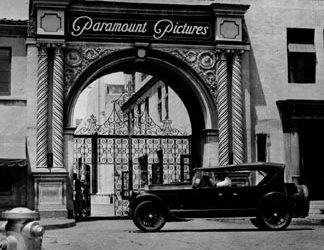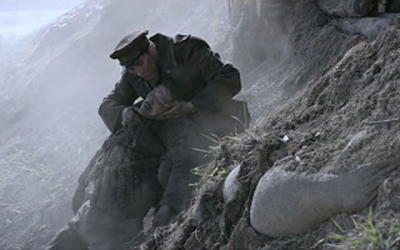Arthur Mola/Invision/AP
Although the ongoing COVID-19 pandemic proved to be a major challenge for the film festival circuit in 2020, it was not enough to prevent some of the industry’s biggest events from occurring, albeit with some significant changes. Employing such tactics as hybrid exhibition (screening films in both theaters and online through streaming) and anti-COVID health practices (such as limited auditorium capacity), these festivals have not only found a way to exist in the middle of an international crisis, but to also introduce the films that could shine the brightest once the award season commences. Despite the disadvantage, such events as the Berlin Film Festival and the Toronto International Film Festival were pulled off without a hitch, and the next major film festival coming up, the Sundance Film Festival, hopes to achieve similar results.
On Tuesday, December 15th, organizers of the Sundance Film Festival announced the lineup of films that will be exhibited over the course of its run, which will take place from January 28th, 2021 to February 3rd. Throughout the week, the festival plans to showcase seventy-two feature-length films, fifty shorter-length productions, and four episodic works, each representing the visions and talents of filmmakers hailing from twenty-nine nations across the globe. Of these films, thirty-eight are being created by directors making their feature debuts, and sixty-six will make their world premiere at the festival.
Because the COVID-19 pandemic continues to plague the United States – in fact, many states are seeing record numbers of new daily cases and being forced into lockdown once again – many have expressed concern about how the festival can safely operate. Fortunately, the Sundance Film Festival has been able to reduce the potential of disease spread by announcing that most of the event will be held virtually. Although some in-theater screenings will be held at various points across the country (likely enforcing social distancing through limited auditorium capacity), most of the films being exhibited by the festival will be made available through an online platform exclusive to those willing to pay for a pass, one that range in price from the standard $500 to the $2,500 of an all-access pass.
Depending on the pass bought, festival “guests” will either gain instant access to the films being presented or request space in advance. The latter scenario will give those permitted to attend a virtual screening will be allowed to watch the film either during its premiere screening, creating a three-hour window after the time of its debut, or two days after its premiere, during which the film will be accessible for twenty-four hours. According to festival director Tabitha Jackson, this format will hopefully prove to be less challenging for filmgoers who might otherwise have trouble with scheduling. “Because you’re not running between venues,” Jackson claims, “the possibility of seeing more films is higher.”
As stated earlier, the small number of physical screenings to be held by the festival will take place in multiple states spread across the country, at a total of twenty-five different venues. This is opposed to previous festivals, where all the films were screened at venues located in Park City, Utah, and with this strategy, the films will be much more accessible to those living outside the festival’s native state. How accessible, of course, depends on where one is located in the nation. Some states will only have one venue dedicated to showcasing Sundance films, such as Northwest Film Forum in Seattle,Washington or the FilmNorth Riverview Theater in Minneapolis, Minnesota. Other states will host a larger number of Sundance-backed screenings, with the state of California alone holding events at six different locations, from the Roxie Theater in San Francisco to the Rose Bowl in Pasadena.
These physical screenings are not merely limited to the contiguous states though, as the Doris Duke Theatre at the Honolulu Museum of Art in Hawaii and the Museo de Arte de Puerto Rico will also showcase a handful of Sundance films. In addition, a significant number of these venues will be drive-in theaters instead of the typical indoor auditorium most film festivals are accustomed to. For those attending screenings at such locations as the Sidewalk Drive-In in Birmingham, Alabama, they will be able to do so from the safety of their own cars.
Although this year’s lineup is smaller than previous festivals, which have exhibited over a hundred different films within the duration of a given festival, the films being presented are expected to be no less engaging, especially considering the diversity achievements that have been made. Not only will this festival be the first where the number of male-directed and female-directed films is even (about 50% of the films to be shown were directed by at least one woman), but 4% are directed by those whose gender identity is nonbinary, 15% of their directors are part of the LGBT community, and 51% of these films were spearheaded by a person of color. Given the great difficulty many minority groups have faced over the decades in terms of being represented in front of or behind the camera, many have expressed great joy in how much this year’s festival has achieved in terms of greater inclusivity.
Of course, there will be no shortage of big stars at this year’s festival. Among the more familiar names to present their work are actress Rebecca Hall, making her directorial debut with the race-focused drama “Passing”, and Ahmir “Questlove” Thompson, whose documentary “Summer of Soul”, will be included as part of the festival program. Still, the festival will provide many opportunities for up-and-coming filmmakers to make their presence known to the world, and even with a pandemic continuing to take its toll on the nation, the high spirits of those who will take part in the festival show no signs of losing such positivity. It just goes to show how powerful the medium of film can be even during the worst of crises.




